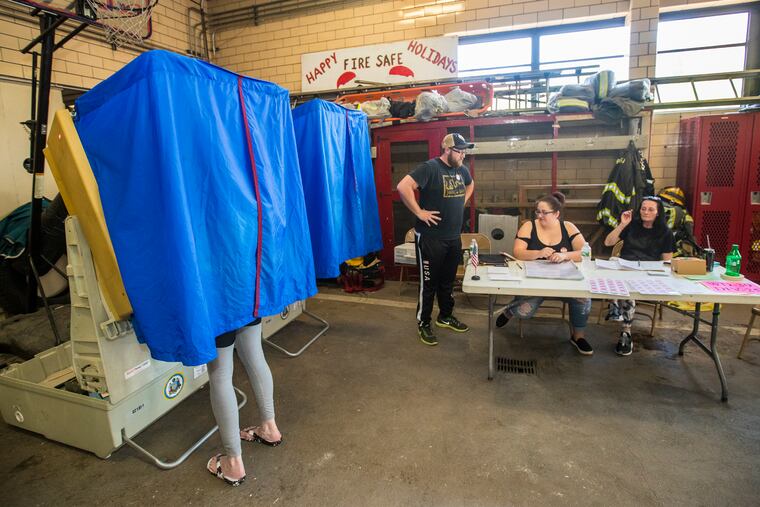What’s the holdup? Pa. needs to move all voting to mail-in ballots now | Editorial
In addition to ending gerrymandering and allowing open primaries, Pennsylvania should adopt a system where all eligible residents vote by mail.

Pennsylvania's lawmakers are headed for their long summer vacation, apparently avoiding any effort to create an independent commission to redraw election lines.
That is a failure of leadership, which has become all too routine in Harrisburg. But there are other bipartisan steps lawmakers could take to improve the state's outmoded election system.
In addition to ending gerrymandering and allowing open primaries, Pennsylvania should adopt a system where all eligible residents vote by mail.
Voting by mail has several benefits: It has been shown to increase participation, especially in off-year elections. It is also cheaper because there is no need for polling places or election workers, let alone the estimated $125 million to upgrade the current voting machines. It is also safe from software hacks that could affect the outcome of elections.
Currently, three states – Colorado, Oregon and Washington – hold all elections by mail. And 37 states allow for early voting with no excuse needed for not being able to vote on Election Day. Pennsylvania allows voters to mail in an absentee ballot with a valid excuse and voters must request a ballot.
In the 2016 general election, Utah conducted voting by mail in 21 counties, while eight counties held traditional voting at polls. The result was a 5 percent to 7 percent increase in turnout in the counties that voted by mail, according to a recent study. A separate study in California found turnout increased by 7.6 percent in special elections but did not increase in presidential or gubernatorial elections.
Anything that could increase voter participation in Pennsylvania is welcome. Turnout for the primary election in May was a paltry 18 percent. In Philadelphia, the turnout was 17 percent.
Primary elections often have lower turnout. But even for the hotly contested 2016 November election, nearly 40 percent of Pennsylvania voters stayed home.
Most other developed countries have much higher voter turnout, including Sweden (83 percent) and South Korea (80 percent), a Pew Research Center survey shows.
Voting by mail eliminates the hassle of getting to the polls on a workday and standing in line. Being able to vote from home is especially helpful to the elderly, the handicapped, and residents in rural or remote locations who may have to travel a long distance to a poll. (Heck, maybe even City Commissioner Anthony Clark would vote if he could mail in a ballot.)
Anecdotal evidence from residents in states that allow voting by mail say it provides more time to research and contemplate ballot decisions.
There have been efforts to bring Pennsylvania's voting system into the 21st century. State Rep. Rob Matzie (D., Beaver/Allegheny) introduced a bill last year that would give residents the option to vote by mail, arguing it would make voting more accessible and secure.
In March, Gov. Wolf proposed several reforms aimed at modernizing Pennsylvania's voting system, including absentee ballots that do not require an excuse. That's an improvement, but moving all voting to mail-in ballots would be cheaper, safer, and more efficient. But best of all, it would increase voter participation, which is badly needed in a functioning democracy.